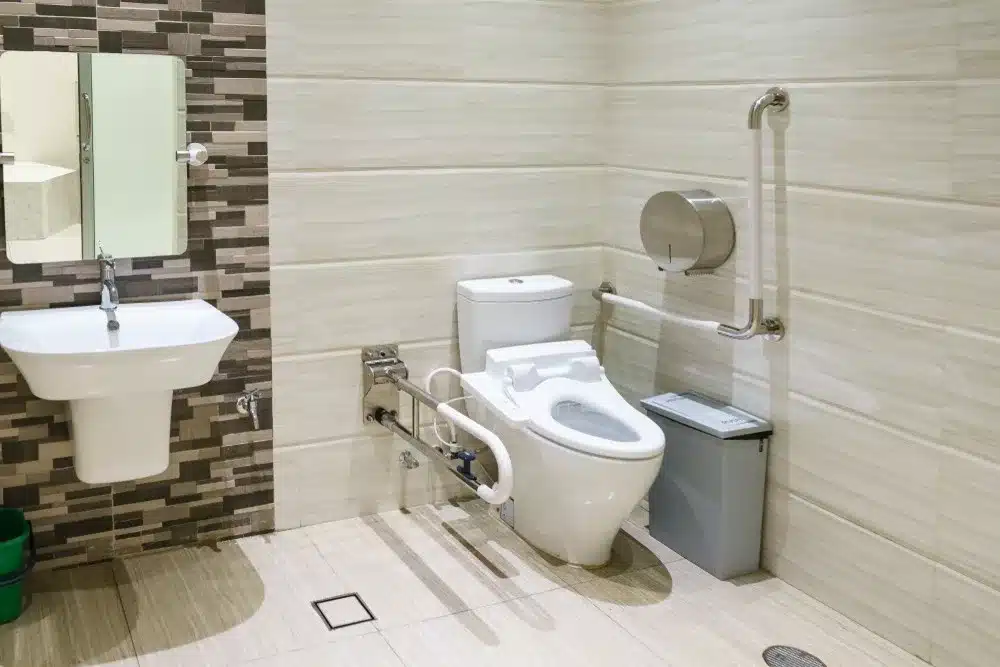Falls are a common concern, especially among seniors. They can lead to significant injuries and impact the quality of life. However, by focusing on preventing falls with better lighting, we can create safer environments for everyone, particularly the elderly. In this guide, we’ll explore how improved lighting can significantly reduce the risk of falls, offering practical solutions for safer living spaces.

Why Better Lighting is Essential for Fall Prevention
Lighting plays a crucial role in home safety. Poor lighting can obscure hazards and increase the risk of falls. Enhanced lighting can illuminate potential obstacles and ensure that paths are clear. This is particularly important for seniors, whose vision may not be as sharp as it once was. By investing in good lighting, we can make daily activities more manageable and safer.
Common Areas Where Falls Occur
Falls often happen in specific areas of the home, such as stairways, bathrooms, and hallways. These areas require special attention when considering lighting improvements. For example, stairways should have continuous lighting to prevent shadows that can obscure steps. Bathrooms can benefit from motion-sensor lights to ensure that seniors are never left in the dark.
Stairway Lighting Solutions
Stairways are one of the most common areas for falls. To improve safety, consider installing LED lights along the stair risers or using wall-mounted fixtures to provide consistent illumination. Additionally, make sure light switches are easily accessible at both the top and bottom of the stairs.
For more detailed information on wall-mounted support, visit this helpful guide.
Bathroom Safety with Lighting
The bathroom is another high-risk area for falls. Using motion-sensor lights can ensure the room is well-lit without requiring fumbling for switches in the dark. Consider placing lights around mirrors and install non-slip mats for additional safety.
Explore more about LED lighting for bathrooms to enhance safety.
Types of Lighting for Fall Prevention
There are various types of lighting that can help in preventing falls. From ambient lighting to task-specific lights, each serves a unique purpose in enhancing visibility.
Ambient Lighting
Ambient lighting provides overall illumination in a room. It should be bright enough to navigate around safely but not so harsh that it causes glare. Use overhead fixtures or lamps with adjustable settings to achieve the right balance.
Task Lighting
Task lighting is essential for activities that require focus, such as reading or cooking. Consider using under-cabinet lights in the kitchen or reading lamps in living areas. This type of lighting helps to clearly illuminate the task at hand, reducing eye strain and preventing missteps.
Accent Lighting
Accent lighting can highlight specific areas or objects. It can also serve as a safety feature by illuminating pathways or door handles. Use spotlights or LED strips to achieve this effect.
Learn more about improving bathroom visibility with these tips.
Implementing Lighting Changes
Implementing these lighting changes doesn’t have to be expensive or complicated. Here are some practical steps to get started:
Assess Current Lighting
Start by evaluating the existing lighting in your home. Identify areas that are poorly lit and could benefit from additional or improved lighting solutions.
Choose the Right Fixtures
Select fixtures that provide adequate light without adding glare. Consider energy-efficient options like LEDs, which offer long-term savings and reduced maintenance.
Professional Installation
For more complex installations, such as those in stairwells or bathrooms, consider hiring a professional. They can ensure that lighting is both safe and effective.
Benefits of Improved Lighting
Aside from preventing falls, better lighting offers numerous other benefits. It can improve mood, increase productivity, and even enhance the aesthetics of a home. By investing in quality lighting, you’re not only ensuring safety but also enhancing the overall living experience.
Additional Safety Measures
While lighting is crucial, it should be part of a comprehensive approach to fall prevention. Other measures include installing handrails, using non-slip flooring, and ensuring that pathways are clear of obstacles.
For more insights on bathroom safety, check out this external resource.
Conclusion
In conclusion, preventing falls with better lighting is a practical and effective way to enhance safety, especially for seniors. By understanding the importance of good lighting and implementing strategic changes, we can create safer, more comfortable environments that support independence and wellbeing.

FAQs
What type of lighting is best for preventing falls?
A combination of ambient, task, and accent lighting works best for preventing falls. This ensures that all areas are well-lit and potential hazards are clearly visible.
How can I improve lighting in my home on a budget?
Consider using LED bulbs, which are cost-effective and energy-efficient. You can also strategically place lamps and use plug-in nightlights in dark corners.
Are there any other ways to prevent falls in the home?
Yes, in addition to lighting, consider installing handrails, using non-slip mats, and ensuring that pathways are free of obstacles. Regularly checking and maintaining these safety measures is also important.
For more comprehensive bathroom safety tips, visit this additional resource.
This article contains affiliate links. We may earn a commission at no extra cost to you.

